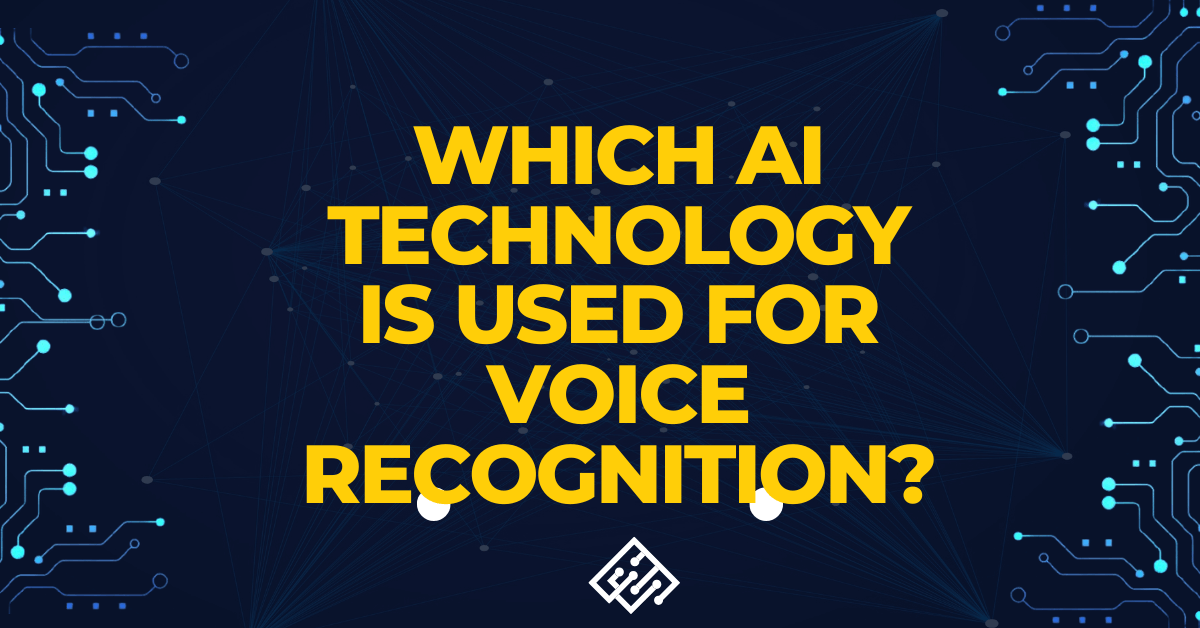Have you ever thought that when you say to your phone, hey Siri or hey Alexa, it does all the work according to you, it even plays your favorite song, it recognize your voice?
This is the magic of AI-powered voice recognition, a technology that is dramatically transforming how they interact with the machines.
But the question is: Which AI technology is used for voice recognition?
In this blog I will share with you all the information that which technology is used for voice recognition and I will tell you simple and clear facts..
What Is Voice Recognition?
Let us now understand what is voice recognition. Voice recognition and speech recognition, you can say, is a technology that allows machines to understand and process human speech.
It has the ability to understand what you say and your voice and it is capable of reading your text and any of your instructions and commands and doing any specific task like sending a message, making a call, answering a question etc.
But behind this smooth experience lies a powerful AI engine. Now let’s us understand Which AI Technology Is Used for Voice Recognition?
Which AI Technology Is Used for Voice Recognition?
Here’s the answer:
Voice recognition uses a combination of AI technologies like:
- Natural Language Processing
- Machine Learning
- Deep Learning
- Automatic Speech Recognition
- Neural Networks
Let’s understand each one in simple terms:
1. Natural Language Processing (NLP)
It is the brain behind understanding what you understand. It is the brain so that it can understand and process easily.
When you ask it to play a particular song or set an alarm, NLP helps the system understand that a task needs to be scheduled for you.
NLP works by:
- Breaking your large sentence into smaller one
- Identifying the intention behind it
- Matching it to a pre-defined task
This tech is also used in chatbots, translations, and sentiment analysis.
2. Machine Learning (ML)
Machine learning helps the system learn through voice data.It analyzes the sounds of millions and billions of people so that it can recognize them all like:
- Accents
- Pronunciations
- Speed and pitch variations
- Pitch variations
Gradually, with time, it is getting better at understanding your voice, your instructions, like sometimes you speak fast or very slow or there is some background noise, it will get better with time.
Apps like Google Assistant and Amazon Alexa use it to increase their accuracy.
3. Deep Learning (DL)
Deep learning is a much better advanced form of machine learning. It uses multiple layers of artificial neurons. For example, there are very complex voices or patterns in voices, it is an advanced form to understand them.
In short:
- DL helps in converting speech to text
- It can even detect emotional tones (happy, confused, sad)
- It boosts the overall performance of voice systems
It is because of deep learning that voice assistants mostly sound like humans and act like robots.
4. Automatic Speech Recognition (ASR)
Automatic speech recognition, which is also known as ASR, is a component of voice recognition. It converts your spoken language into text, just like Google Assistant.
When we speak any message on our phone or laptop, it converts it into written form.
ASR systems are trained using:
- Data of spoken language
- Linguistic rules
- Audio patterns
It’s widely used in:
- Virtual assistants
- Transcription tools
- Customer support IVR systems
5. Neural Networks
The models of neural networks that were created keeping in mind the human brain. These are very useful in explaining the complex voice patterns. Think of them as the engine room.
They help in:
- Detecting speaker identity
- Filtering background noise
- Handling voice commands in different languages
This is the backbone of modern voice tech used in apps like Zoom, Siri, and Bixby.
Also Read: Top PlayStation Plus Monthly Games You Can’t Miss
Real-Life Examples of Voice Recognition Using AI
Let’s look at a few examples where this AI tech is applied:
1. Google Assistant
Uses NLP, ML, and ASR to understand commands like “Remind me to drink water at 3 PM.”
2. Amazon Alexa
Uses deep learning and neural networks to interact with users, control smart home devices, and more.
3. Call Centers
AI voice bots use ASR and NLP to handle common customer queries, reducing wait times.
4. Dictation Software
Apps like Otter.ai and Dragon NaturallySpeaking use voice recognition to transcribe meetings and lectures.
Why AI Is Essential for Voice Recognition
Without AI, voice recognition would be extremely limited.
Here’s why AI is a game-changer:
- Adapts to different voices: Learns your speaking style
- Understands context: Knows the difference between “right” and “write”
- Handles multiple languages: Can support translation and multilingual commands
- Improves over time: Learns from past interactions to get smarter
How It All Works Together
When you speak to your phone, here’s what happens in seconds:
- Voice is captured via microphone
- ASR converts speech to text
- NLP analyzes and understands the command
- ML and Neural Networks process the context
- The system gives the best possible output
It’s teamwork between multiple AI layers!
The Future of Voice Recognition with AI
Voice tech is only going to get better.
Expect:
- Real-time translation in calls
- Voice-based authentication (say goodbye to passwords)
- Voice search dominating SEO
- Emotion-aware assistants that detect your mood
Soon, talking to devices will feel as natural as talking to humans.
Conclusion
To answer this question , it’s a little difficult that which AI technology is used for voice recognition?
It’s not just one, but a powerful combination of:
- NLP
- Machine Learning
- Deep Learning
- ASR
- Neural Networks
When all these technologies come together, a very strong and smart system is created that listens to the voice, understands it and responds like a human.
As AI evolves, so will our ability to interact with technology hands-free, and naturally.
1. What is voice recognition in AI?
Voice recognition in AI is the ability of machines to understand, interpret, and respond to human speech using technologies like NLP, Machine Learning, and Speech-to-Text systems.
2. Which AI Technology Is Used for Voice Recognition?
The most common AI technologies include:
Natural Language Processing (NLP), Machine Learning (ML), Deep Learning (DL)
3. How does Natural Language Processing (NLP) help in voice recognition?
NLP helps the system understand the meaning behind the spoken words, not just the words themselves. It identifies user intent and provides relevant responses.
4. What is the difference between voice recognition and speech recognition?
Voice recognition identifies the speaker (who is talking), while speech recognition understands what is being said.







